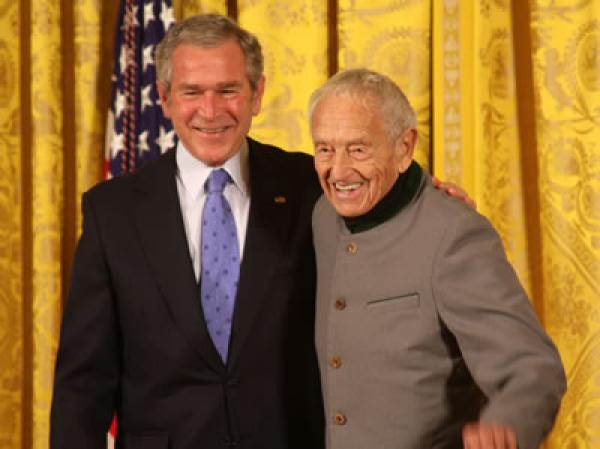Bio
The paintings of Andrew Wyeth have been etched in the American national consciousness for more than a half a century. While many of Wyeth’s landscapes and interior views of rural Pennsylvania and Maine are recognizable settings, his work portrays an inner life that is elusive and enigmatic.
The youngest of five children, Andrew Newell Wyeth was born on July 12, 1917 in Chadds Ford, Pennsylvania in the Brandywine Valley near Philadelphia. He was educated at home with his father, noted illustrator N.C. Wyeth, providing art lessons. When he was only 20 years old, he had his first solo exhibition at Macbeth Gallery in New York City. The rapid and complete sale of the exhibition inventory was an indication of his enormous popularity with the American public in the years to come.
In 1939, Wyeth met Betsy James whose family had a summer place not far from the Wyeths in Cushing, Maine. She was 17 years old, Wyeth was 20, and after a week he proposed. They were married the following spring and have remained married for 68 years. Over those years, Betsy has been her husband’s protector as well as artistic guide.
In October 1945, Wyeth’s father and his three-year old nephew Newell were killed in a car accident. He has referred to this tragedy as not only of deep personal impact but also formative in the development of his artistic style. Shortly after the accident, his paintings became more serious and intense, characterized by a muted palette, highly realistic depictions, and emotionally charged subjects, often tinged with a sense of nostalgia and loss. He found nearly all of his subjects close to either Chadds Ford or Cushing.
In 1950, he was selected along with Jackson Pollock by Time magazine as one of the greatest American artists. That and other public attentions, made clear the battle lines drawn between supporters and practitioners of realism and abstraction as represented by Wyeth and Pollock. To add to the art world debates, in 1986, Wyeth made public a collection of 246 studies, drawings, and paintings, including many nudes, he had made of Helga Testorf, a neighbor in Chadds Ford.
Wyeth remains an enormously popular artist among the public and by museums. His work is in the collections of The Metropolitan Museum of Art, the Whitney Museum of American Art, and the Museum of Modern Art, among many others. Exhibitions of his work have been mounted by the National Gallery of Art (the first to display the Helga works in 1987), the Museum of Fine Arts (Boston,) Metropolitan Museum of Art, and most recently the Philadelphia Museum of Art, amongst many others.
In 1963, Andrew Wyeth became the first painter to receive the Presidential Medal of Freedom, which was conferred by President John F. Kennedy. In 1977, he became the first American artist since John Singer Sargent elected to the Académie des Beaux-Arts. In 1978, he was asked to join the Soviet Academy of the Arts, and in 1980, he was the first living U.S. artist to be elected to Britain's Royal Academy. Wyeth received the Congressional Gold Medal in 1988, the highest civilian honor bestowed by the United States Congress.

